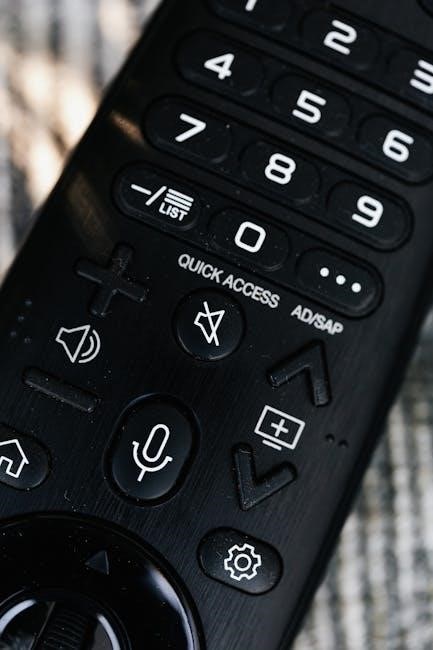free printable alphabet letters upper and lowercase pdf
Explore a wide variety of free printable alphabet letters, including uppercase and lowercase options, perfect for educational and creative projects. These templates are versatile, easy to download, and suitable for activities like letter recognition, crafting, and learning. With styles ranging from bold to decorative, they cater to both teachers and crafters, offering a fun and practical way to engage with the alphabet.
1.1 Overview of Uppercase and Lowercase Letters
Free printable alphabet letters include both uppercase (ABC) and lowercase (abc) versions, providing a comprehensive resource for learning and crafting; Uppercase letters are larger and often used for headings or emphasis, while lowercase letters are smaller and used in regular writing. Together, they help learners understand letter recognition, formation, and case differentiation. These printable templates are designed in various styles, from bold and colorful to simple outlines, making them versatile for activities like tracing, matching, or decorating. The availability of both cases in PDF format ensures that users can easily download and print the letters they need for projects such as flashcards, worksheets, or classroom decorations, catering to educational and creative purposes alike.
1.2 Importance of Printable Alphabet Templates
Printable alphabet templates are invaluable for education and creativity, offering a practical way to teach letter recognition, handwriting, and alphabetical order. They provide a hands-on learning tool for children, making the learning process engaging and effective. These templates are also versatile, suitable for crafting projects, classroom decorations, and personalized gifts. Their availability in both uppercase and lowercase formats ensures comprehensive learning, helping users master the fundamentals of the alphabet. With free PDF downloads, educators and parents can easily access these resources, making them a cost-effective and convenient solution for various educational and creative activities, fostering both learning and imagination in a fun and accessible way.
1.3 Benefits for Learning and Crafting
Free printable alphabet letters offer numerous benefits for both learning and crafting. For education, they provide interactive tools for teaching letter recognition, tracing, and handwriting practice, making learning engaging and fun. These templates also aid in understanding alphabetical order and word formation. In crafting, they serve as versatile materials for creating decorative projects, personalized gifts, and classroom decorations. The availability of uppercase and lowercase letters in various styles allows for creative customization. Additionally, these templates are cost-effective and easily accessible, saving time and resources. Whether for teaching young students or crafting unique designs, printable alphabet letters are a valuable resource that enhances both educational and creative experiences, fostering skills and imagination in a practical and enjoyable way.

Where to Find Free Printable Alphabet Letters
Discover a variety of websites offering free printable alphabet letters, including popular platforms like Just Family Fun, Clipart Library, and educational sites providing templates for learning and crafting.

2.1 Popular Websites Offering Free Downloads
Several websites provide free printable alphabet letters in both uppercase and lowercase formats. Just Family Fun offers a comprehensive collection of alphabet templates, ideal for educational and decorative purposes. Clipart Library features high-quality, downloadable letters suitable for various projects. Additionally, platforms like Printablee and Createdres provide stylish and customizable options, including tracing worksheets and flashcards. These websites cater to diverse needs, from learning activities to crafting. They often include PDF formats for easy downloading and printing. Whether you’re a teacher, parent, or crafter, these sites offer versatile resources to enhance your projects. Explore these platforms to find the perfect alphabet letters for your specific needs.

2.2 Educational Platforms with Alphabet Templates
Educational platforms like Teachers Pay Teachers and Education.com offer a variety of free printable alphabet templates. These resources are designed to support learning, with uppercase and lowercase letters available in different styles. Many platforms provide worksheets, flashcards, and tracing activities to aid in teaching letter recognition and handwriting skills; For example, Printablee offers alphabet scavenger hunts, while other sites focus on interactive PDFs for classroom use. These templates are ideal for teachers and parents seeking to create engaging lesson plans. They often include customizable options, allowing users to tailor activities to specific learning needs. With these tools, educators can help students master the alphabet in a fun and structured way, making learning enjoyable and effective.
2.3 Creative Marketplaces for Custom Letters
Creative marketplaces like Etsy and Creative Market offer unique and customizable printable alphabet letters. These platforms provide a variety of stylish templates, including uppercase and lowercase letters, designed for both educational and artistic purposes. Many sellers offer free or affordable downloads, allowing users to personalize their projects. For instance, Clipart library provides high-quality printable letters suitable for worksheets, presentations, and crafts. These marketplaces cater to educators, crafters, and designers, offering diverse fonts and designs to enhance learning and creativity. Whether you’re making decorative signs, personalized gifts, or educational tools, these platforms are a great source for custom alphabet templates that stand out. They often include bonus features like tracing guides or matching activities, making them versatile for multiple uses.

Downloading and Printing Tips
Ensure smooth downloading by selecting the correct PDF files and verifying printer settings. Choose high-quality paper for crisp outputs, and adjust settings for optimal letter clarity and size.
3.1 How to Download PDF Files
Downloading free printable alphabet letters in PDF format is straightforward. Visit reputable websites like Just Family Fun or Clipart Library, which offer high-quality templates. Select the desired letter set, choose between uppercase or lowercase options, and click the download link. Ensure a stable internet connection to avoid interrupted downloads. Once downloaded, locate the PDF file in your device’s downloads folder. For optimal use, ensure you have a PDF viewer installed. These files are ready to print and offer versatility for educational or creative projects. By following these steps, you can easily access and utilize printable alphabet letters to enhance learning and crafting activities.
3.2 Printing Tips for Best Quality
To ensure the best print quality for your free printable alphabet letters, use high-quality paper such as cardstock or thick printer paper. Set your printer to high-resolution settings (300 DPI or higher) for crisp, clear letters. Choose the correct paper size and orientation in your printer settings to avoid scaling issues. Use vibrant ink or toner to maintain bold and colorful lettering. Align your printer heads beforehand to prevent blurry or misaligned prints. For optimal results, print on one side first to check alignment and quality before proceeding; Finally, allow the ink to dry completely before handling the printed letters to avoid smudging. These tips will help you achieve professional-looking results for educational or crafting projects.
3.3 Choosing the Right Paper
Selecting the right paper is crucial for achieving crisp and durable prints of your free printable alphabet letters. Opt for high-quality, thick paper such as cardstock (80-100 gsm) for vibrant colors and sharp details. Matte or luster finishes are ideal for readability, while glossy paper enhances color intensity. Avoid thin or flimsy paper, as it may lead to blurry or faded prints. Ensure your printer settings match the paper type for optimal results. For educational purposes, cardstock is recommended to make the letters sturdy for repeated use. For decorative projects, consider textured or specialty papers to add visual appeal. Choosing the right paper ensures your printable letters look professional and withstand handling, making them perfect for learning, crafting, or display.

Using Printable Letters for Educational Activities
Printable alphabet letters are ideal for educational activities, such as letter recognition, handwriting practice, and classroom decorations. They engage students visually, making learning interactive and fun for all ages.
4.1 Teaching Letter Recognition
Printable alphabet letters are a valuable tool for teaching letter recognition, offering clear visuals of both uppercase and lowercase forms. These templates help young learners distinguish between similar-looking letters, such as ‘b’ and ‘q,’ or ‘p’ and ‘q.’ By using large, bold designs, children can easily identify shapes and patterns. Activities like matching games, where students pair uppercase and lowercase letters, enhance memory retention. Flashcards and tracing worksheets further reinforce recognition and handwriting skills. Teachers and parents can customize these resources to suit individual learning needs, making them versatile for classroom or home use. The availability of free PDF downloads ensures accessibility, providing a cost-effective way to support early literacy development and build a strong foundation for reading and writing.
4.2 Handwriting Practice Worksheets
Free printable alphabet letters are an excellent resource for creating handwriting practice worksheets. These templates provide clear models for both uppercase and lowercase letters, helping students learn proper formation and spacing. Tracing activities allow young learners to develop fine motor skills and hand-eye coordination. Worksheets often include guided lines, arrows, and dashed outlines to ensure letters are written correctly. Teachers can customize these resources by printing individual letters or entire alphabet sets. Printable PDFs make it easy to create practice sheets tailored to different age groups, from preschoolers learning basic strokes to older students refining their handwriting. These tools are particularly useful for reinforcing letter formation in a structured and engaging way, making handwriting practice both effective and enjoyable for students.
4.3 Alphabetical Order Activities
Free printable alphabet letters are a valuable tool for teaching alphabetical order. These resources allow educators and parents to design engaging activities that help learners understand and memorize the sequence of letters. One popular activity involves creating matching games where students pair uppercase and lowercase letters or arrange them in order. Printable letter cards can also be used for sequencing exercises, where children sort letters from A to Z. Additionally, scavenger hunts using printed letters encourage active learning, as students search for letters in their environment. These activities enhance letter recognition, memory, and fine motor skills, making the learning process interactive and enjoyable. They are particularly effective for young learners, helping them build a strong foundation in understanding the alphabet sequence.

DIY Crafts with Printable Alphabet Letters
Transform spaces with decorative projects using free printable alphabet letters. Create personalized gifts, scrapbooks, and classroom decorations. These versatile templates inspire creativity for both kids and adults, combining fun with learning;
5.1 Decorative Projects
Free printable alphabet letters are a fantastic resource for creating unique decorative projects. Whether you’re crafting personalized wall art, custom banners, or festive decorations, these letters offer endless possibilities. Use uppercase letters for bold statements or lowercase for a softer look. Print them on colorful paper or cardstock to add vibrancy to your designs. You can also laminate them for durability, making them perfect for long-lasting displays. Additionally, these letters can be used to create monograms, name tags, or motivational quotes for home or classroom decor. Their versatility allows you to mix and match styles, ensuring your projects are both functional and aesthetically pleasing. Explore your creativity and elevate any space with these customizable alphabet templates.
5.2 Personalized Gifts
Free printable alphabet letters are an excellent way to create personalized gifts that stand out. Use uppercase and lowercase letters to craft custom cards, scrapbooks, or photo frames. Print and cut out letters to spell names, special messages, or meaningful quotes, making your gifts uniquely thoughtful. These templates are perfect for birthdays, holidays, or milestone events. You can also use them to create monograms, adding a personal touch to items like tote bags or journals. The ease of customization allows you to tailor your gifts to the recipient’s preferences, making them truly special. Whether for friends, family, or students, printable alphabet letters offer a creative and heartfelt way to show you care.
5.3 Classroom Decorations
Free printable alphabet letters are a fantastic resource for classroom decorations, offering a vibrant and educational way to enhance learning spaces. Teachers can use uppercase and lowercase letters to create engaging displays, such as alphabet walls, word charts, or themed bulletin boards. These letters can be printed in various colors and styles, making them versatile for different classroom themes. For example, you can create welcome signs, label storage areas, or design motivational quotes using the letters. Such decorations not only brighten up the room but also provide constant visual reminders of the alphabet, aiding students in letter recognition and spelling. Additionally, they can be used to create interactive learning tools, fostering a stimulating and organized environment for students to thrive in. Incorporating these printable letters is a simple yet effective way to make classrooms both functional and visually appealing.

Learning Tools and Resources
Free printable alphabet letters offer versatile learning tools, including flashcards for memorization, tracing worksheets for handwriting practice, and scavenger hunts, supporting interactive and engaging educational activities.
6.1 Flashcards for Memorization
Free printable alphabet flashcards are an excellent tool for helping children memorize uppercase and lowercase letters. These flashcards are designed to be visually appealing, with clear, bold letters that make learning engaging. Many templates include both upper and lower case versions of each letter on the same card, allowing kids to see the differences and relationships between them. They are ideal for interactive learning activities, such as matching games or quick recall exercises. Parents and teachers can print these flashcards in vibrant colors or black and white, depending on preference. The portability of flashcards makes them a great resource for on-the-go learning. With their simple design and educational value, flashcards are a timeless tool for fostering letter recognition and memory retention in young learners.
6.2 Tracing Worksheets
Free printable alphabet tracing worksheets are a valuable resource for helping children practice handwriting and letter recognition. These worksheets typically feature uppercase and lowercase letters with dashed lines, guiding kids to trace and replicate the shapes accurately. By repeating the tracing process, children develop muscle memory and improve their fine motor skills. Many templates include both upper and lower case letters side by side, allowing learners to compare and understand the differences. Tracing worksheets are ideal for preschool and kindergarten activities, as they make learning interactive and fun; They also serve as a foundational tool for teaching writing skills, helping children transition from tracing to independent writing. With customizable styles and sizes, these worksheets cater to various learning needs and preferences.
6.3 Alphabet Scavenger Hunts
Alphabet scavenger hunts are a fun and interactive way to engage children in learning the alphabet. Using free printable uppercase and lowercase letters, parents and educators can create activities where children search for and identify letters in their surroundings. These hunts can be tailored to different skill levels, with uppercase letters for beginners and lowercase for more advanced learners. Scavenger hunts not only improve letter recognition but also encourage active participation and teamwork. They can be conducted indoors or outdoors, making learning dynamic and enjoyable. Printable letter templates allow for easy customization, ensuring that the activity remains challenging yet rewarding. This method fosters a deeper connection with the alphabet, making it a memorable experience for young learners.

Troubleshooting Common Issues
Common issues with printable alphabet letters include download errors, misalignment in printing, and incorrect letter sizing. Ensure a stable internet connection, adjust printer settings, and verify paper size for optimal results.
7.1 PDF Files Not Downloading
If you’re having trouble downloading PDF files of printable alphabet letters, ensure you have a stable internet connection. Check if your browser is updated and free from extensions like ad blockers that might interfere. Verify that the download link is valid and try accessing it from a different browser or device. Clear your browser cache and cookies, as outdated data can cause issues. If the problem persists, contact the website’s support team for assistance. Additionally, ensure your device has enough storage space to accommodate the download. By addressing these common issues, you can successfully access and print your desired alphabet templates.
7.2 Printing Alignment Problems
When printing free printable alphabet letters, alignment issues can occur due to incorrect printer settings. Ensure your printer is set to the correct paper size and orientation. Check the PDF file’s margins and scaling options, as some files are designed for specific paper sizes. If letters appear misaligned, try adjusting the printer’s alignment settings or calibrating it. Using high-quality paper that matches the recommended size can also improve print accuracy. Additionally, ensure your printer drivers are updated, as outdated software may cause alignment errors. For precise results, print a test page before printing the actual letters to verify alignment and adjust settings if necessary. This ensures your alphabet templates print correctly and are ready for use.

7.3 Letter Size and Formatting Issues
Letter size and formatting issues can arise when using free printable alphabet letters. Ensure the PDF is downloaded in the correct size, such as standard A4 or Letter. Check if the letters are scaled properly during printing, as resizing can distort their appearance. Some templates may require adjusting margins or fit-to-page settings to maintain clarity. If letters appear too small or large, verify the template’s dimensions match your needs. For custom projects, consider editing the PDF in software like Adobe Acrobat to adjust font sizes. Always preview the print layout to confirm the letters fit the page correctly. Proper formatting ensures the alphabet letters are clear and usable for educational or creative purposes, avoiding wasted paper and ink.
Free printable alphabet letters offer a versatile tool for learning and creativity, aiding in education and crafting. Encouraged to utilize these templates, fostering engaging and effective experiences for all users.
8.1 Summary of Key Points
Free printable alphabet letters, both uppercase and lowercase, are versatile tools for education and crafting. They provide a practical way to teach letter recognition, improve handwriting, and enhance learning experiences. These templates are easily downloadable in PDF format and offer a variety of styles to suit different needs. Whether for classroom activities, DIY projects, or personalized gifts, printable letters are a convenient and cost-effective solution. They also serve as excellent resources for creating flashcards, tracing worksheets, and scavenger hunts, making learning interactive and fun. With their accessibility and customization options, these letters are a valuable asset for educators, parents, and crafters alike, fostering creativity and educational growth in an engaging manner.
8.2 Encouragement to Use Printable Letters
Embrace the convenience and versatility of free printable alphabet letters to enhance learning and creativity. These templates are an invaluable resource for educators, parents, and crafters, offering a fun and interactive way to engage with the alphabet. Whether for teaching letter recognition, creating decorative projects, or making personalized gifts, printable letters provide endless possibilities. Their ease of use and customization options make them a perfect tool for fostering creativity and educational growth. By incorporating these letters into your activities, you can create meaningful and memorable experiences for children and adults alike. Start exploring the wide range of styles and designs available today and unlock a world of learning and creativity!
8.3 Final Thoughts on Learning and Creativity
Free printable alphabet letters are a transformative tool for both learning and creativity. They offer a practical and engaging way to help children master the fundamentals of reading and writing while inspiring artistic expression. Whether used in classrooms or at home, these templates provide endless opportunities for educational growth and creative exploration. Their versatility makes them a valuable resource for teachers, parents, and crafters alike. By leveraging these printable letters, individuals can foster a deeper understanding of the alphabet and unlock a world of imaginative possibilities. With their ease of access and customizable designs, they remain an indispensable asset for anyone looking to combine learning with creativity.

































































